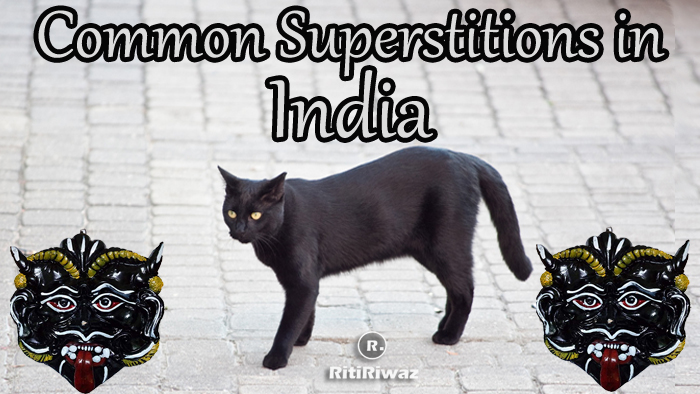20 Common Superstitions In Indian Culture

Belief in Omen or Superstitions existed in all countries and ages, especially in India where we blindly believe and follow them. Although India is fast progressing still there are many people who believe in these omen very strongly.
Since childhood, we are taught to believe in many things, behind which there is really no belief. As we grow up, we understand that the things we have been following are just superstitions and nothing else. These omens can be good or bad and people in daily life fear for so many things which are associated with these omens.
‘Kaali Billi rasta kaat gai‘ to ‘nimbu mirchi totka‘, there are so many weird omens followed in India we are not defending them but simply sharing what we were told during our childhood.
1. When you are going on a journey and a black cat crosses your path then it is considered a bad omen. Not only in India there is superstition surrounding black cats in various parts of the world. Britain and Japan consider the black cat as good luck while in the west black cat is looked like an evil omen. Most of Europe considers the black cat as a symbol of bad luck. Germany believes black cat crossing of a black cat from right to left as bad while left to right as good omes. The United Kingdom considers it to be a good omen. Also while going out when somebody asks you a question of “Where you are going” is considered as a bad omen.
2. Nazar Uttarna is warding off negative vibes or Buri Nazar. You can see people applying a black dot on the child’s forehead, neck, or behind ears. Nazar battu is hanged to ward off evil eyes in homes and businesses.
3. You will often see people hanging the lemons and green peppers on threads on the doors of people’s houses or shops, etc. It is believed that it prevents bad eyesight.
4. Standing or sleeping under a peepal tree in the night is considered bad, it is a traditional belief that ghost lives on peepal trees in the night will haunt you, which have come up with scientific belief too that tree release CO2 in the night.
5. We are always forbidden to see a face in broken glass. It is said that looking at the broken glass breaks luck.
6. Cutting of nails and hair after the sun sets is one of the strongest superstitions considered in India. At the same time, it is also prohibited to apply a broom in the evening.
7. If you see a crow cawing near your house then you are likely to get visitors to your house.
8. Eating sweet curd before an exam is believed to bring good luck.
9. Girl’s horoscope is matched with a boy’s horoscope for marriage and it is believed that they will have a successful married life if it matches.
10. Continuous hiccups are a sign that somebody is remembering you.
11. The twitching of the left eye of women and the right eye of men is considered good. While twitching of the right eye of women and the left eye of men is considered bad.
12. Itching in the left hand of women and the right hand of men is considered good, while itching of the right hand of women and the left hand of men is not considered bad.
13. If somebody is leaving home for work and you sneeze thrice then it is considered a bad omen.
14. Keeping footwear upside down is considered to bring a fight between family members.
15. A stuck clock in the house is considered bad, it means wealth is not flowing in one’s life.
16. If you shake legs, you might lose your wealth.
17. There are many people in India who consider haircutting on Tuesday as bad. Haircutting is strictly forbidden in most homes on Tuesday.
18. It is considered auspicious to add a rupee when every you gift money. You can see Rs 1 coin is stuck on the wedding envelope.
19. Limiting women from certain things during periods.
20. Bathing after attending a funeral ceremony.
